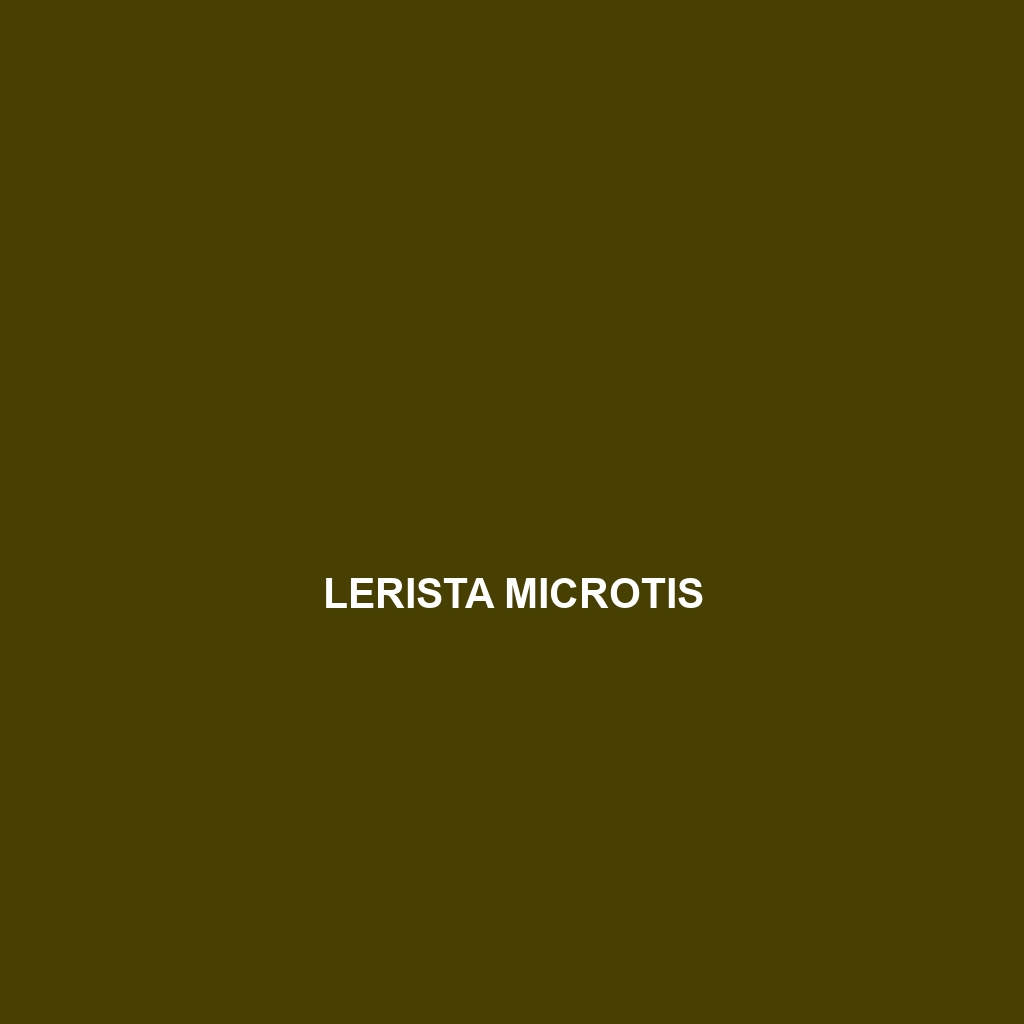Common Name
Lerista micra
Scientific Name
Lerista micra
Habitat
Lerista micra is primarily found in the sandy and dry habitats of southwestern Australia. This species thrives in regions characterized by a temperate climate, particularly within areas that experience seasonal rainfall. The preferred habitats include heathlands, scrublands, and coastal dunes, where the substrate is sandy, allowing the creatures to burrow easily. The unique combination of the arid environment and native vegetation provides essential resources for escape from predators and breeding grounds. These habitats are crucial for its survival, as they offer not just shelter but also a suitable microenvironment that supports its needs.
Physical Characteristics
Lerista micra is a small, sleek skink that typically reaches a body length of around 10–15 cm. The most distinctive feature is its elongated body with smooth, shiny scales, which are often a striking combination of brown, grey, and some lighter shades, allowing it to blend remarkably well with its sandy surroundings. The limbs of this species are reduced, leading to a more serpentine shape, which facilitates efficient burrowing. Notably, Lerista micra possesses well-defined dorsal and ventral scales that enhance its movement through loose sediment, marking it as a unique example of adaptation within the family Scincidae.
Behavior
Typically, Lerista micra exhibits diurnal behavior, being most active during daylight, although it may also engage in some nocturnal activities, especially during hotter months. These skinks are generally solitary creatures and have been observed to maintain territories, employing burrowing and hidden retreats as defensive strategies against predators. During mating seasons, males may display competitive behaviors to establish dominance, which can include body posturing and possibly aggressive interactions. They are also known to engage in basking to regulate body temperature, an essential behavior for their thermoregulation.
Diet
Lerista micra is primarily insectivorous, feeding mainly on small invertebrates such as ants, beetles, and various insect larvae. This diet consists predominantly of softer-bodied prey, with skinks often utilizing their keen eyesight and rapid movement to capture their food. Their foraging strategies include active hunting; however, Lerista micra will also consume detritus and decomposing organic material found in its habitat, aiding in nutrient cycling within the ecosystem. This omnivorous feeding behavior ensures a well-rounded dietary intake, essential for their growth and reproductive success.
Reproduction
The reproductive cycle of Lerista micra typically spans from late spring to early summer when temperatures are optimal for breeding. Mating rituals may involve courtship displays, and after successful copulation, females often lay clutches of 2-6 eggs in shallow burrows or under leaf litter. The gestation period lasts approximately two to three months, with hatchlings emerging in late summer. These juveniles are independent immediately upon hatching and receive no parental care. This reproductive strategy allows for maximizing survival rates in the initially harsh environment of their habitats.
Conservation Status
As per current assessments, Lerista micra is categorized as ‘Least Concern’ by the International Union for Conservation of Nature (IUCN). However, habitat destruction due to urban development and land conversion poses a potential threat to its population. Conservation efforts are focusing on habitat protection and management within their native ranges to ensure that their populations remain stable. Ongoing studies aim to monitor their populations and assess the long-term impacts of environmental changes on their survival.
Interesting Facts
One fascinating aspect of Lerista micra is its remarkable ability to adapt its behavior and physiology to the harsh Australian climate. Not only does it have an efficient burrowing mechanism, but it can also survive extended periods without water, an essential adaptation in arid environments. Additionally, the species has a unique way of communicating through body language, where subtle movements and postures can convey various meanings to potential mates or rivals.
Role in Ecosystem
Lerista micra plays a critical role in its ecosystem as a predator of numerous insects, helping to maintain the balance within the food web. By controlling insect populations, these skinks contribute to the health of the vegetation in their habitats, fostering an ecosystem that supports a variety of species. Moreover, as prey for larger predators, including birds of prey and mammals, Lerista micra serves as an essential food source, highlighting its integral place within the ecological community. These interactions underline the importance of preserving their habitats to maintain biodiversity and ecosystem health.
